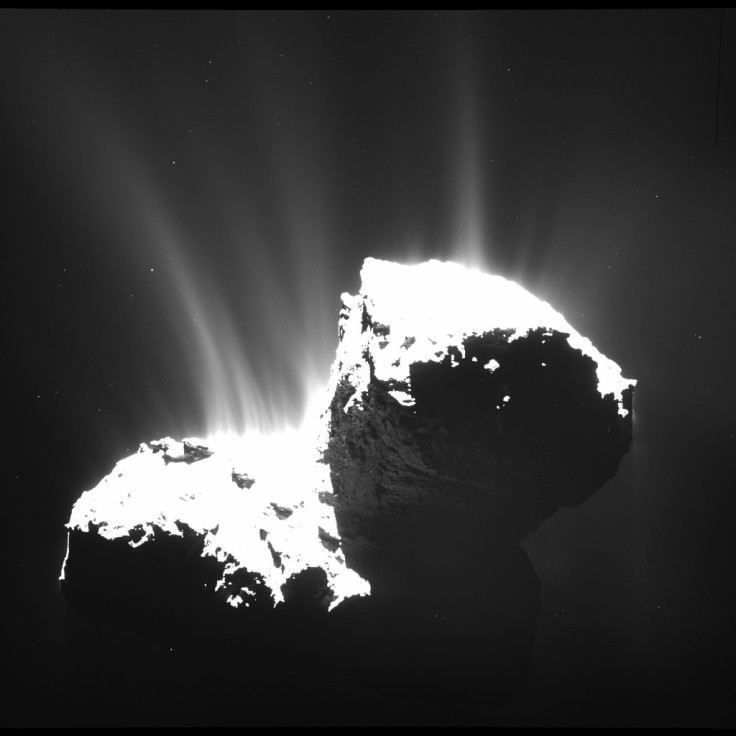ESA Rosetta Mission: Will perihelion throw up some fireworks?

As comet 67P/Churyumov-Gerasimenko races for its rendezvous with the Sun on 13 August, when it will be closest to the star at 186 million kilometres, Rosetta will be reporting all the action live from orbit around the sizzling piece of ancient rock.
The mission could send home some striking images if the duck-shaped comet ruptures at the fracture observed at its neck.
The 500-metre fracture could widen and deepen as more material is thrown out from the comet's interior due to the effect of the Sun's heat.
Such a splintering would be the bonus fireworks for the 10-year long journey of Rosetta, which has many firsts to its credit, not least being the dropping of a lander when moving at high speeds.
This will be the first time any spacecraft has been able to observe the melting nucleus of a comet.
The ringside view of Rosetta could confirm the sinkholes expected when ice, carbon dioxide and carbon monoxide below the surface evaporate, carrying with them the comet's dust.
The deep pits left could suck in the surface ice and dust, creating sinkholes all over the comet, Mark McCaughrean, a senior scientist at the European Space Agency (ESA) told The Guardian.
However, the extreme volatile conditions around the comet could also produce conditions to confuse Rosetta's tracker. "It uses the positions of stars to align itself, but gets confused when lots of new pinpricks of light appear," he said.
This would mean placing the probe relatively high above the comet, which could result in loss of detail of the surface conditions.
However, Rosetta will be getting "an unprecedented view of a comet" as it sweeps round the Sun, he said. This will include a view of the spectacular tail of the comet stretching for millions of miles.
The journey so far
Launched on 2 March 2004 by Ariane 5 rocket from the European Space Agency's base in Kourou, French Guiana, Rosetta is on a long journey into the inner solar system carrying along the comet lander Philae.
Flying past Mars in 2007 and twice by Earth, in 2007 and 2009, Rosetta veered away to about 800 million kilometres from the Sun and a billion kilometres from home.
It then largely hibernated between 2011 and 2014 to finally arrive at destination - comet 67P - and go into orbit on 6 August.
Next came the extraordinary feat of dropping Philae on 12 November last year, but a double bounce owing to the terrain led to Philae resting in a shaded region. After two days of using up battery reserves, Philae went silent.
The hibernation was broken twice this June but attempts to establish a communication link have been shaky.
However, the mother probe and the lander managed to return vital information about the comet using various instruments.
These included the shape, composition and density of the space rock. The presence of complex organic chemicals, like methyl isocyanate, acetone, propionaldehyde and acetamide, detected in the soil fact have thrown up more proof that comets probably seeded Earth and possibly other planets, with ingredients essential for forming life.
Rosetta and the sleeping Philae will continue their journey onwards with the comet until late next year, when the probe will run out of fuel and crash into the comet.
© Copyright IBTimes 2025. All rights reserved.





















